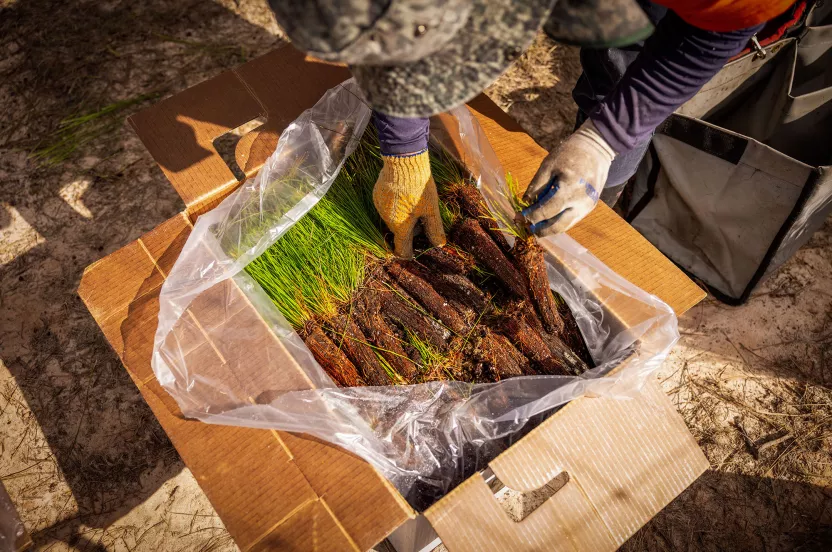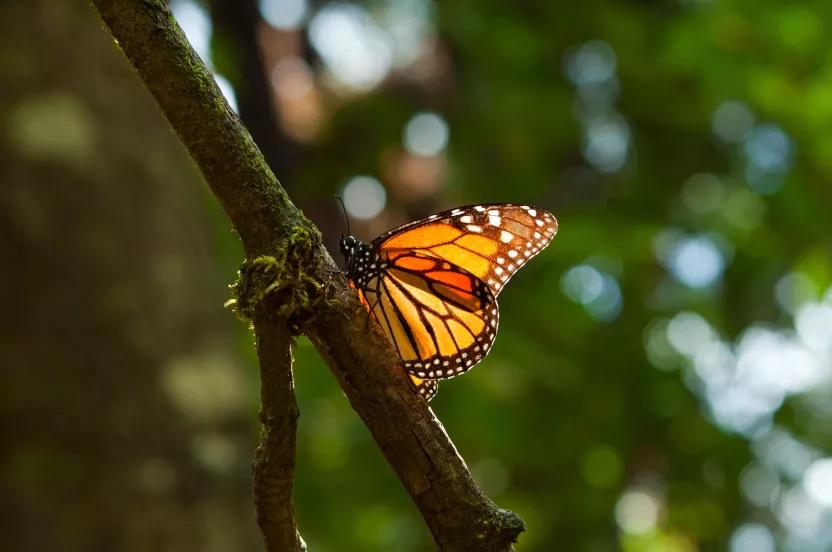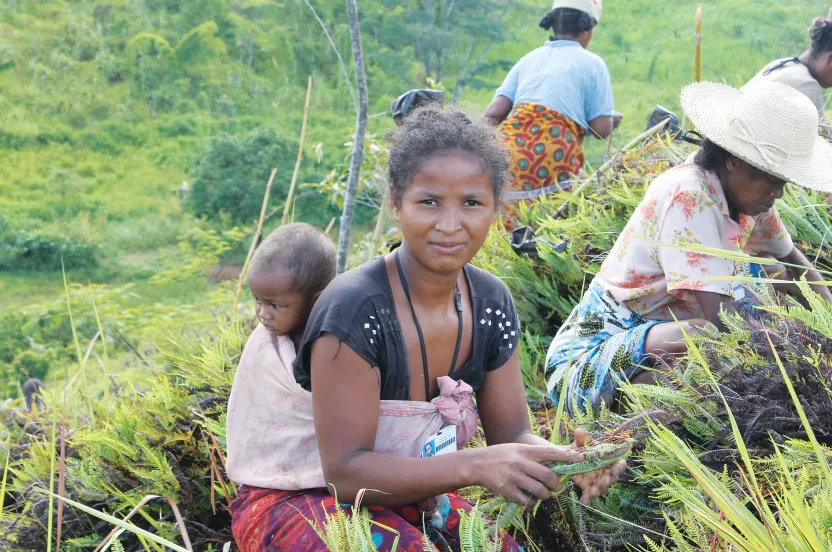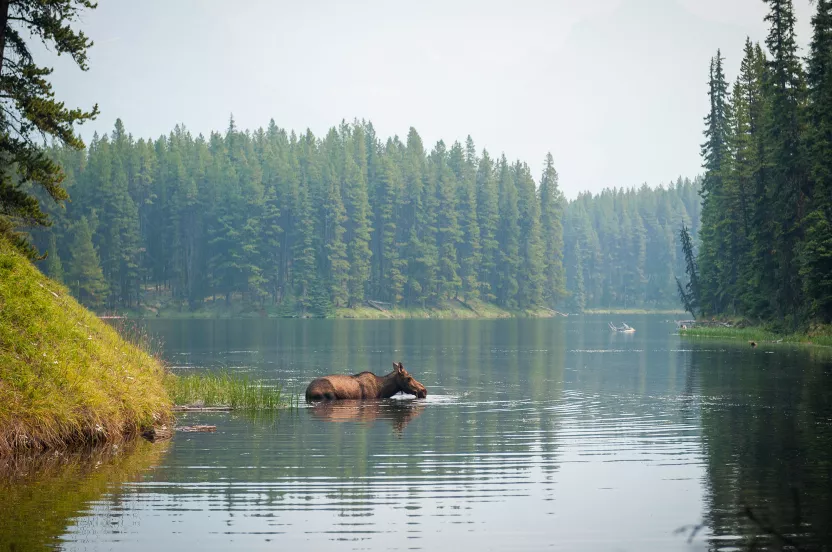The Arbor Day Foundation is pledging 10 million trees to areas impacted by hurricanes Helene, Milton Help us replant
How Healthy is the Forest? Ask This Owl.
From habitat loss to an “evil twin” problem, the Northern spotted owl gives conservationists a lot to consider.
July 14, 2023

In the days of coal mining, workers would take canaries down to the tunnels with them to detect carbon monoxide. Canaries would warn miners of the impending danger in their surroundings.
Some environmentalists say Northern spotted owls in the forests of the Pacific Northwest are like the canaries in the coal mines. As an indicator of forest health, the spotted owl population also serves as a warning signal for the condition of its environment.
But there’s bad news.
“[The spotted owl] is on a trajectory to be functionally extinct, probably within this century,” says Dan Donato, a scientist with the Washington Department of Natural Resources.
So what does that mean for the forests the spotted owl frequents?
A Goldilocks Habitat Dilemma
According to Donato, if you define forest health by a landscape’s ability to sustain populations of all its native species, then the decline of the spotted owl shows the forests it inhabits may be in trouble.
Donato specializes in the research and monitoring of northern spotted owl habitats, which are dependent on old-growth forests to survive. The U.S. Department of Agriculture has varying definitions for what constitutes old-growth forests, but they all typically include old, mature trees with large trunk diameters and dense canopy layers.
This specific type of forest is becoming increasingly rare after decades of harvesting, disease, and insect infestation. The Arbor Day Foundation partnered with the Washington Department of Natural Resources to plant a dense tree canopy over thousands of acres to help spotted owls survive. The plantings of Douglas fir, Western hemlock and Western redcedar mimic a similar structure of old-growth forests and serve to help owls nest, roost, and forage.
The destruction of old-growth forests caught the attention of the White House in 2022. The Biden Administration issued an executive order that requires the U.S. Departments of Agriculture and the Interior to develop policies to address threats to old-growth forests.
A majority of the Northern spotted owl’s range is in old-growth forests on the coastal side of the Cascade Mountain Range. Unfortunately, within this wetter region, old-growth has been logged and the forests have been converted to new growth. Donato says this conversion of the land and habitat fragmentation has had a drastic impact on the species and are the most critical threats to the owl’s survival.
Though the owl can mostly be found on the moist side of the mountains, there are also some dry forests within their range standing east of the Cascade Mountain Range crest. But the lack of moisture, coupled with the typical characteristics of old-growth, makes conserving the forest difficult.
“Many structural features of spotted owl habitat, like dense multi-layered canopies, are all the exact same things that you might describe as fuel buildup,” Donato warns, referring to the plant material wildfires use to tear through forests.
To help prevent wildfires — a dire issue in the American West — dense trees need to be thinned as part of fuel management.
“But if you thin it too much and make it open so it’s fire-resistant, you’ve made it not-spotted owl habitat anymore,” Donato cautions. “It’s just this constant tension, and it’s actually one of the big active areas of both research and management: ‘How do we provide both?’”
Still, Donato notes that shrinking habitat is not the sole issue facing the northern spotted owl. There’s also a different adversary at play:
At first glance, the two birds could easily be mistaken for each other. The barred and spotted owls are the same size, have about the same wingspan, and have brown and white feathers. The photo above is a comparison from the National Park Service. But Donato says that’s where their similarities end. While Donato describes the Northern spotted owl as a “mellow” creature, the barred owl is infamous for its hostility.
“Barred owls are just super aggressive. They don’t have the same personality at all.”
This evil twin is causing problems for its easygoing look-a-like. The barred owl competes with the spotted owl, driving them out of their natural habitats. Sometimes, the barred owl even preys on the spotted owl. With the spotted owl population now in a downward spiral, scientists are stepping in.
“The Fish and Wildlife Service is running experiments to remove barred owls from landscapes,” Donato explains. “If you create a vacuum with no barred owls in it, the spotted owls, if they are still out there somewhere, will they come back and use the habitat?”
Donato suspects more spotted owls are lurking in the shadows of old-growth forests than some experts believe.
“They’ve actually just learned to be quiet. They don’t respond to calling anymore because they’ve learned that when they respond to our calls, they get beat up by barred owls,” Donato says.
Despite a litany of challenges facing the Northern spotted owl, Donato says he’s hopeful their fate won’t feel quite as bleak one day. He says some of that hope stems from an evening earlier in his career when he was sent out with an owl-hoot broadcaster to attempt to elicit responses from spotted owls.
“They sent me to do this ridiculous exercise it felt like because it was all just completely cut over. All young forest except for these little patches of older forests scattered around,” he recalls.
After many calls went unanswered, he was ready to pack up and go home.
“Then from the distance, I heard a spotted owl respond. It was just poignant to me because I had sort of given up,” Donato says. “It was like the owl was telling me, ‘Don’t give up on me yet. I’m still finding a way somehow.’”
Why it matters
As the plight of the Northern spotted owl shows, reforestation is more complicated than planting trees and hoping for the best. The bird’s struggles are an important reminder of the delicate balance required to sustain the world’s most critical ecosystems. Because everything is interconnected.
Change one factor, and you’ve altered a complex system that nature relies on to survive and thrive. Sometimes those decisions can lead the ecosystem in a positive direction. Done thoughtlessly, it can backfire altogether. It’s a fragile dynamic that can’t be ignored.
That’s why the Arbor Day Foundation maintains relationships with experts in global priority regions, like the American West. By collaborating with experienced people who understand the complex needs of the landscape, we’re able to put the right tree, in the right place, for the right reason.






